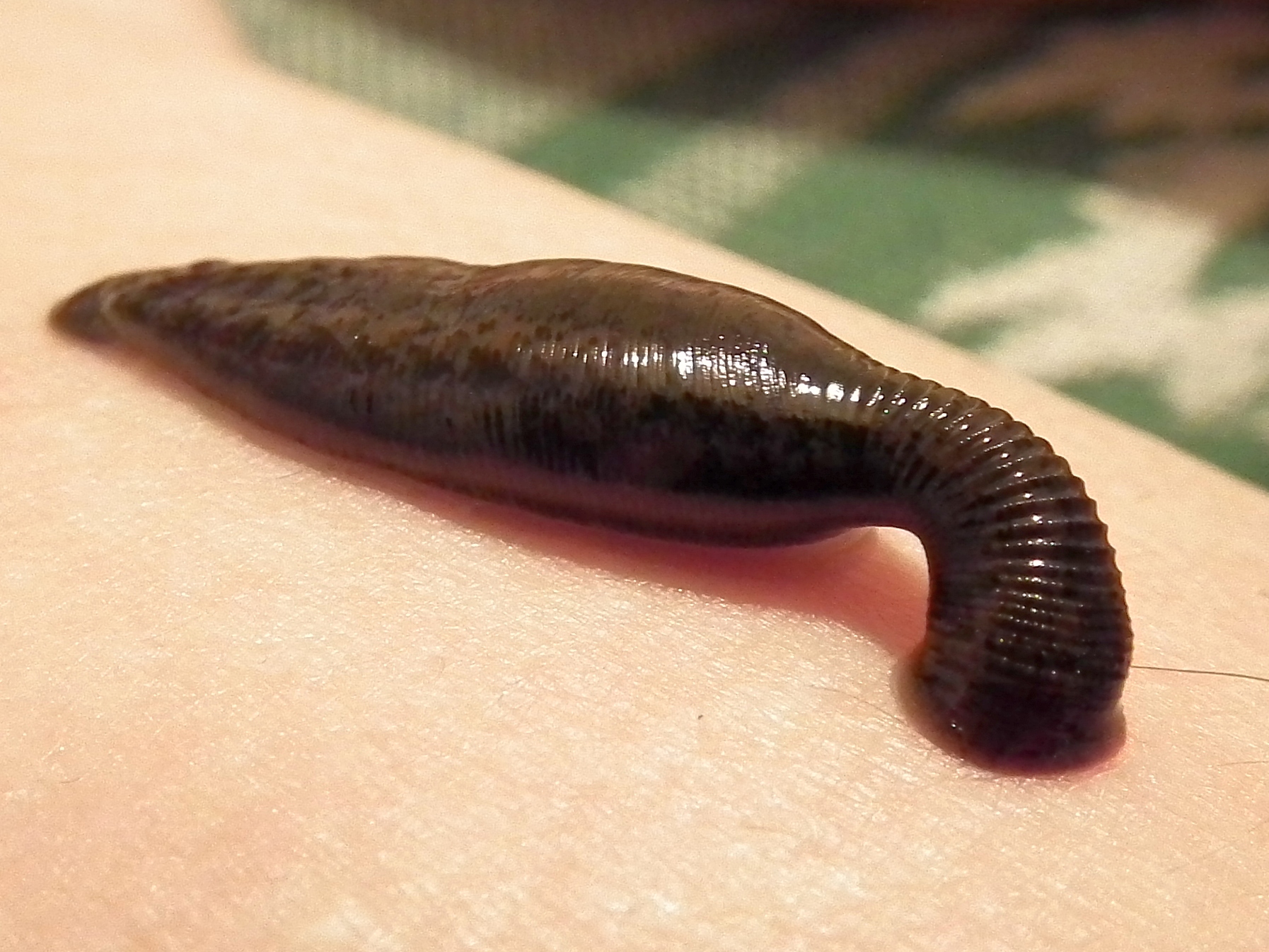|
Telorchis Corti
''Telorchis'' is a genus of trematode parasites found in many herps, comprising around 70 species. This parasite is an indirect parasite, with a snail intermediate host and a reptile or amphibian definitive host. Typically found in the gastrointestinal tract of their definitive host, telorchids attach to the wall of the intestinal tract with their ventral sucker, or acetabulum. Morphology Description of ''Telorchis'' from Wharton 1940: "Elongate, flat distomes with simple oral suckers. Oral and ventral suckers subequal. Pharynx present. Intestinal crura begin preacetabular and end near the posterior end of the body. Vitellaria lateral. Genital pore just anterior to the ventral sucker, usually somewhat to the left of the median line. Cirrus sac extends behind the acetabulum. Ovary posterior to or at the posterior level of cirrus Cirrus may refer to: Science *Cirrus (biology), any of various thin, thread-like structures on the body of an animal *Cirrus (botany), a tendril * ... [...More Info...] [...Related Items...] OR: [Wikipedia] [Google] [Baidu] |
Telorchis Clemmydis
''Telorchis clemmydis'' is a species of flukes in the genus '' Telorchis'' found in Asian freshwater turtles, mainly of the family Geoemydidae. Host species * ''Mauremys japonica'' (gall bladder and intestines) * ''Cuora amboinensis'' (intestine) * '' Heosemys grandis'' (intestine) * ''Mauremys'' reevesii (intestine) * ''Orlitia borneensis The Malaysian giant turtle or Bornean river turtle (''Orlitia borneensis'') is a species of turtle in the family Bataguridae. It is monotypic within the genus ''Orlitia''. It is found in Indonesia and Malaysia. This species is the largest fresh ...'' Neely, W. J., Freeman, J. M., Greiner, E. C., & Dronen, N. O. (2017). A Sample of Endohelminths from Four Species of Malaysian Freshwater Turtles (Geoemydidae) Confiscated in 2001 by Authorities in Hong Kong, People's Republic of China. ''Comparative Parasitology'', ''84''(2), 201-205.(intestine) References {{Taxonbar, from=Q22286364 Plagiorchiida Animals described in 1933 Invertebr ... [...More Info...] [...Related Items...] OR: [Wikipedia] [Google] [Baidu] |
Karl Moriz Diesing
Karl (Carl) Moriz (Moritz) Diesing (16 June 1800, in Krakow – 10 January 1867, in Vienna) was an Austrian naturalist and zoologist, specializing in the study of helminthology. He studied medicine at the University of Vienna, earning his doctorate in 1826. Afterwards, he served as an assistant to botanist Nikolaus Joseph von Jacquin, later working as an intern at the ''Hof-Naturalien-Cabinet'' (from 1829). In 1836 he became a curator of the zoological collections. In the late 1840s, he began to suffer from serious eye problems, and shortly afterwards experienced permanent blindness. His principal works include ''Systema Helminthum'' (2 vols., 1850–1851), and ''Revision der Nematoden'' (1861). In his paper "''Versuch einer monographie der Gattung Pentastoma''" (Ann. Wien Mus. Naturges. 1836, 1–32), he was the first to establish the distinct nature of the Pentastomida The Pentastomida are an enigmatic group of parasitic arthropods commonly known as tongue worms due to t ... [...More Info...] [...Related Items...] OR: [Wikipedia] [Google] [Baidu] |
Trematoda
Trematoda is a class of flatworms known as flukes. They are obligate internal parasites with a complex life cycle requiring at least two hosts. The intermediate host, in which asexual reproduction occurs, is usually a snail. The definitive host, where the flukes sexually reproduce, is a vertebrate. Infection by trematodes can cause disease in all five traditional vertebrate classes: mammals, birds, amphibians, reptiles, and fish. Etymology Trematodes are commonly referred to as flukes. This term can be traced back to the Old English name for flounder, and refers to the flattened, rhomboidal shape of the organisms. Taxonomy There are 18,000 to 24,000 known species of trematodes, divided into two subclasses — the Aspidogastrea and the Digenea. Aspidogastrea is the smaller subclass, comprising 61 species. These flukes mainly infect bivalves and bony fishes.https://www.biotaxa.org/Zootaxa/article/view/zootaxa.3918.3.2 Digenea — which comprise the majority of trematodes — are f ... [...More Info...] [...Related Items...] OR: [Wikipedia] [Google] [Baidu] |
Herpetology
Herpetology (from Greek ἑρπετόν ''herpetón'', meaning " reptile" or "creeping animal") is the branch of zoology concerned with the study of amphibians (including frogs, toads, salamanders, newts, and caecilians (gymnophiona)) and reptiles (including snakes, lizards, amphisbaenids, turtles, terrapins, tortoises, crocodilians, and the tuataras). Birds, which are cladistically included within Reptilia, are traditionally excluded here; the scientific study of birds is the subject of ornithology. Thus, the definition of herpetology can be more precisely stated as the study of ectothermic (cold-blooded) tetrapods. Under this definition "herps" (or sometimes "herptiles" or "herpetofauna") exclude fish, but it is not uncommon for herpetological and ichthyological scientific societies to collaborate. Examples include publishing joint journals and holding conferences in order to foster the exchange of ideas between the fields, as the American Society of Ichthyologists a ... [...More Info...] [...Related Items...] OR: [Wikipedia] [Google] [Baidu] |
Parasitism
Parasitism is a Symbiosis, close relationship between species, where one organism, the parasite, lives on or inside another organism, the Host (biology), host, causing it some harm, and is Adaptation, adapted structurally to this way of life. The entomologist E. O. Wilson has characterised parasites as "predators that eat prey in units of less than one". Parasites include single-celled protozoans such as the agents of malaria, sleeping sickness, and amoebic dysentery; animals such as hookworms, lice, mosquitoes, and vampire bats; fungi such as Armillaria mellea, honey fungus and the agents of ringworm; and plants such as mistletoe, dodder, and the Orobanchaceae, broomrapes. There are six major parasitic Behavioral ecology#Evolutionarily stable strategy, strategies of exploitation of animal hosts, namely parasitic castration, directly transmitted parasitism (by contact), wikt:trophic, trophicallytransmitted parasitism (by being eaten), Disease vector, vector-transmitted paras ... [...More Info...] [...Related Items...] OR: [Wikipedia] [Google] [Baidu] |
Host (biology)
In biology and medicine, a host is a larger organism that harbours a smaller organism; whether a parasitic, a mutualistic, or a commensalist ''guest'' (symbiont). The guest is typically provided with nourishment and shelter. Examples include animals playing host to parasitic worms (e.g. nematodes), cells harbouring pathogenic (disease-causing) viruses, a bean plant hosting mutualistic (helpful) nitrogen-fixing bacteria. More specifically in botany, a host plant supplies food resources to micropredators, which have an evolutionarily stable relationship with their hosts similar to ectoparasitism. The host range is the collection of hosts that an organism can use as a partner. Symbiosis Symbiosis spans a wide variety of possible relationships between organisms, differing in their permanence and their effects on the two parties. If one of the partners in an association is much larger than the other, it is generally known as the host. In parasitism, the parasite benefits ... [...More Info...] [...Related Items...] OR: [Wikipedia] [Google] [Baidu] |
Acetabulum (morphology)
Acetabulum (plural acetabula) in invertebrate zoology is a saucer-shaped organ of attachment in some annelid worms (like leech) and flatworms. It is a specialised sucker for parasitic adaptation in trematodes by which the worms are able to attach on the host. In annelids, it is basically a locomotory organ for attaching to a substratum. The name also applies to the suction appendage on the arms of cephalopod molluscs such as squid, octopus, cuttlefish, ''Nautilus'', etc. Etymology Acetabulum literally means "a small saucer for vinegar". It is derived from two Latin words ''acetum'', meaning "vinegar", and ''-bulum'', a suffix denoting "saucer" or "vessel" or "bowl". The name is used because of the saucer-like structure in the invertebrates. Structure Annelids In leeches, acetabulum refers to the prominent posterior sucker at the extreme end of the body. In fact it forms a head-like structure, while the actual head is relatively small. It is a thick disc-shaped muscular sys ... [...More Info...] [...Related Items...] OR: [Wikipedia] [Google] [Baidu] |
Anatomical Terms Of Location
Standard anatomical terms of location are used to unambiguously describe the anatomy of animals, including humans. The terms, typically derived from Latin or Greek roots, describe something in its standard anatomical position. This position provides a definition of what is at the front ("anterior"), behind ("posterior") and so on. As part of defining and describing terms, the body is described through the use of anatomical planes and anatomical axes. The meaning of terms that are used can change depending on whether an organism is bipedal or quadrupedal. Additionally, for some animals such as invertebrates, some terms may not have any meaning at all; for example, an animal that is radially symmetrical will have no anterior surface, but can still have a description that a part is close to the middle ("proximal") or further from the middle ("distal"). International organisations have determined vocabularies that are often used as standard vocabularies for subdisciplines o ... [...More Info...] [...Related Items...] OR: [Wikipedia] [Google] [Baidu] |
Cirrus (biology)
In biology, a cirrus , plural ''cirri'', , (from the Latin ''cirrus'' meaning a ''curl-like tuft or fringe'') is a long, thin structure in an animal similar to a tentacle but generally lacking the tentacle's strength, flexibility, thickness, and sensitivity. In the sheep liver fluke, for example, the ''cirrus'' is the worm's muscular penis and when not in use is retained within a ''cirrus sac'' or ''pouch'' near the animal's head. The same structure exists in the various ''Taenia'' species of tapeworm. In the clam worms, however, the cirrus is the tentacular process or growth on each of the feet (''parpodia''), either the ''dorsal cirrus'' or the ''ventral cirrus'', and has nothing to do with reproduction. Among the bristleworms, a cirrus is a tentacular growth near the head or notopodium containing sense organs and may be either dorsal, ventral, or lamellar. Among the ribbonworms, the ''caudal cirrus'' is a small thread-like growth at the posterior end of the worm. ... [...More Info...] [...Related Items...] OR: [Wikipedia] [Google] [Baidu] |
Parasites Of Reptiles
Parasitism is a close relationship between species, where one organism, the parasite, lives on or inside another organism, the host, causing it some harm, and is adapted structurally to this way of life. The entomologist E. O. Wilson has characterised parasites as "predators that eat prey in units of less than one". Parasites include single-celled protozoans such as the agents of malaria, sleeping sickness, and amoebic dysentery; animals such as hookworms, lice, mosquitoes, and vampire bats; fungi such as honey fungus and the agents of ringworm; and plants such as mistletoe, dodder, and the broomrapes. There are six major parasitic strategies of exploitation of animal hosts, namely parasitic castration, directly transmitted parasitism (by contact), trophicallytransmitted parasitism (by being eaten), vector-transmitted parasitism, parasitoidism, and micropredation. One major axis of classification concerns invasiveness: an endoparasite lives inside the host's body; an ec ... [...More Info...] [...Related Items...] OR: [Wikipedia] [Google] [Baidu] |
Plagiorchiida
Plagiorchiida is a large order of trematodes, synonymous to Echinostomida. They belong to the Digenea, a large subclass of flukes. This order contains relatively few significant parasites of humans. The following families are placed here, organised by superfamily and suborder:Jones, A., Bray, R. A., & Gibson, D. I. (Eds.). (2002). ''Keys to the Trematoda'' (Vol. 1). CABI Publishing and The Natural History Museum. * Apocreadiata ** Apocreadioidea Skrjabin, 1942 *** Apocreadiidae Skrjabin, 1942 * Bivesiculata ** Bivesiculoidea *** Bivesiculidae Yamaguti, 1934 * Bucephalata ** Bucephaloidea Poche, 1907 *** Bucephalidae Poche, 1907 *** Nuitrematidae Kurochkin, 1975 * Echinostomata ** Echinostomatoidea Looss, 1902 *** Caballerotrematidae Tkach, Kudlai & Kostadinova, 2016 *** Calycodidae Dollfus, 1929 *** Cyclocoelidae Stossich, 1902 *** Echinochasmidae Odhner, 1910 *** Echinostomatidae Looss, 1899 *** Fasciolidae Railliet, 1895 *** Himasthlidae Odhner, 1910 *** Phil ... [...More Info...] [...Related Items...] OR: [Wikipedia] [Google] [Baidu] |




.jpg)

.jpg)
